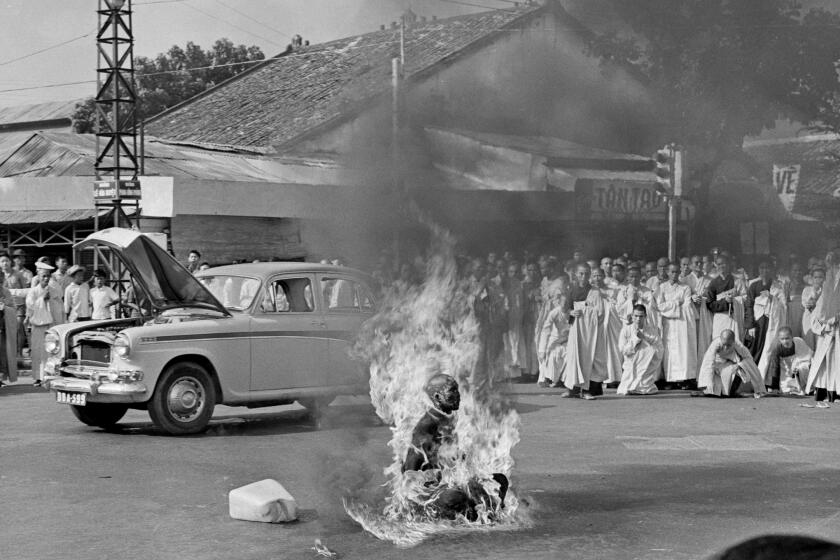Op-Ed: Why are African Americans better off in San Diego than St. Louis? Fair housing
The Fair Housing Act of 1968 — whose 50th anniversary we marked last week — seemed a monumental achievement at the time, a capstone to the historic measures of the 1960s that sought to transform race relations in America. Today, however, many civil rights activists view it largely as a failure because black/white housing segregation remains the norm in too much of urban America.
But something central has been widely overlooked. Fair-housing laws did bring about substantial change in a significant number of American cities. And a large body of careful research shows that in these areas, integration has had remarkable effects in narrowing racial gaps.
Metropolitan black/white segregation is commonly measured by an “index of dissimilarity,” which describes, on a scale of 0 to 100, the proportion of blacks who would need to move to another block to achieve the same geographic distribution in a metro area as whites (or vice versa). A score of 100 corresponds to complete segregation, and 0 corresponds to complete integration. Many major metro areas — New York, Chicago, Philadelphia, St. Louis — have indices above 75 or even 80. But a significant number of other metro areas do much better: San Diego, Seattle, San Antonio and Nashville, for example, have indices between 50 and 65.
Compelling evidence shows that lower housing segregation itself is a prime driver of the narrowing racial gaps.
On nearly every dimension, social and economic conditions are far better for African Americans in moderate- versus high-segregation cities, in San Diego rather than, say, St. Louis. The benefits of lower segregation especially accrue to low- and moderate-income blacks. In high-segregation areas, unemployment among young black men averages about three times the white rate; in moderately segregated areas, it’s 1 1/2 times. Black couples that include at least one college graduate have earnings that average about 75% of white earnings in high-segregation cities; it’s 90% in moderately segregated areas. Even age-adjusted death rates differ: They are 42% higher for blacks than whites in highly segregated cities, in moderately segregated cities the gap is 14%.
To be sure, significant gaps remain in more integrated areas. It’s also true that, to some degree, better black outcomes are due to who is migrating, and once better outcomes mark a neighborhood, that begets lower segregation. But compelling evidence shows that lower housing segregation itself is a prime driver of the narrowing racial gaps.
Metropolitan housing integration produces greater — and lasting — school integration; it greatly reduces the concentration of poverty in black communities; it puts blacks closer to job opportunities. It is powerfully associated with lower rates of violent crime, a smaller test-score gap between black and white students, and better health outcomes. Of course, all these developments reinforce one another, which is why the racial gaps in integrated areas continue to narrow over time.
Lowering city segregation levels by even 15 or 20 points on a 100-point scale has strong effects in reducing black-white inequality. It reduces racial tensions and produces a broader sense of community. White attitudes in America on matters of race, as measured regularly by the University of Chicago’s General Social Survey, have registered broad increases in tolerance in the last 40 years. But the gains have been especially striking in metro areas with lower segregation.
Importantly, once the black/white segregation level falls below 70, it never goes back up. This kind of change is not only profound in its effects, it’s durable.
The 1968 Fair Housing Act targeted discrimination. It made real estate professionals liable to legal action if they denied equal access to racial minorities. Activists fumed because the main enforcement agency — the Department of Housing and Urban Development — was ineffective, but the unsung hero of fair housing was a Department of Justice lawyer named Frank Schwelb, who spearheaded an energetic, national enforcement strategy at the agency in the 1970s. In the 10 years after the act’s passage, an African American’s likelihood of being denied housing in white areas fell by more than two-thirds.
Black mobility increased sharply, but in some metropolitan areas, it mostly affected white neighborhoods very close to existing black enclaves. Even if whites did not flee (and they fled less often than is commonly supposed), the rapid and sustained increase in black demand tended to tip these neighborhoods into resegregation. The net result was more housing for blacks, but no decrease in overall segregation.
The decrease came where black moves were dispersed across many white neighborhoods and where formerly majority-black enclaves attracted some white and Latino migrants (a precursor of contemporary gentrification). Data show that once a “critical mass” of stably integrated neighborhoods existed, they attracted more residents of all races who liked integration, and the cycle toward lasting desegregation was underway.
Contemporary fair-housing battles often focus on where to place subsidized housing, or on quicker processing of discrimination complaints — non-trivial matters but ones that won’t change broad segregation patterns. A new generation of activism should concentrate on nudging mobility patterns. One way to do it is through housing trusts in neighborhoods that are beginning to integrate (or to gentrify) — investing in buildings not to displace tenants or redevelop them but its opposite — to keep rents low and to encourage newcomers. Another method is intensive, free housing counseling to introduce blacks to majority-white neighborhoods and vice versa.
Above all, a greater awareness of the transformative potential of metropolitan housing integration could help turn our generalized desire for racial justice into concrete change.
Richard H. Sander is a professor of law at UCLA School of Law and co-author of the forthcoming book,”Moving toward Integration: The Past and Future of Fair Housing.”
Follow the Opinion section on Twitter @latimesopinionand Facebook
More to Read
A cure for the common opinion
Get thought-provoking perspectives with our weekly newsletter.
You may occasionally receive promotional content from the Los Angeles Times.






